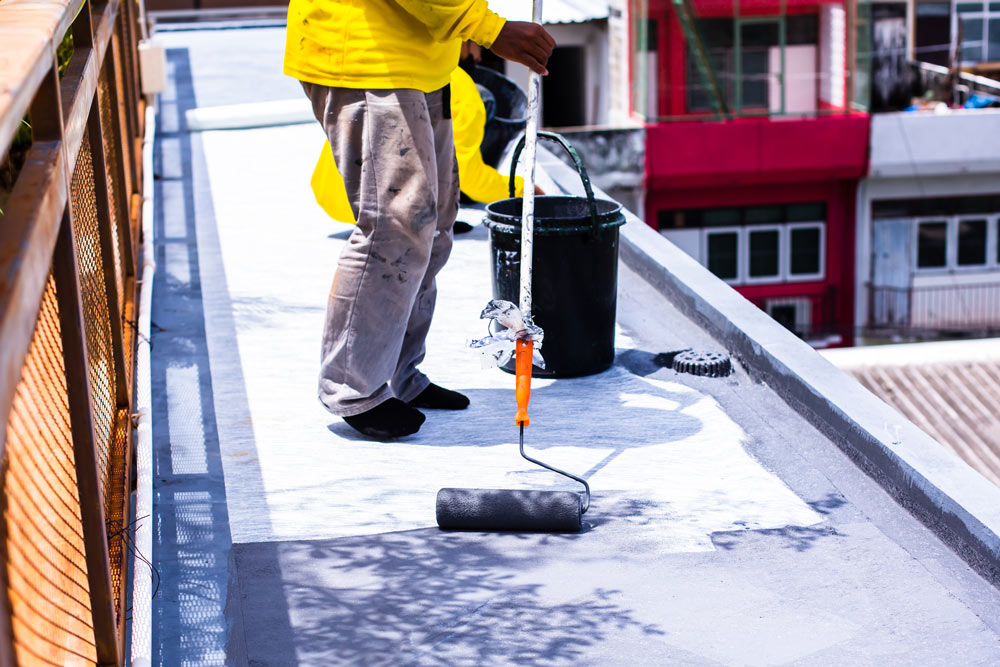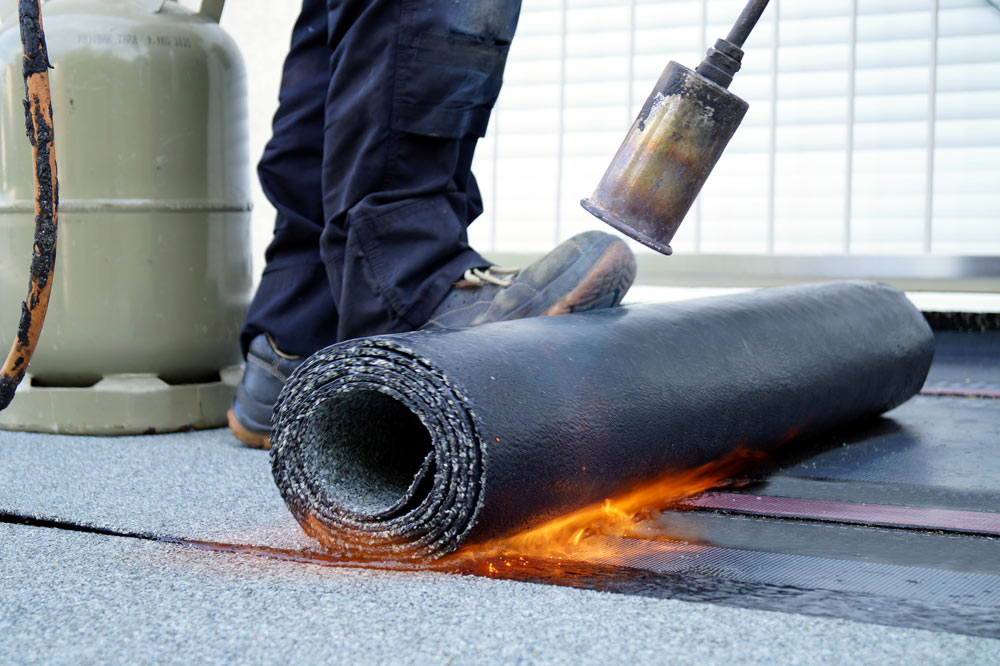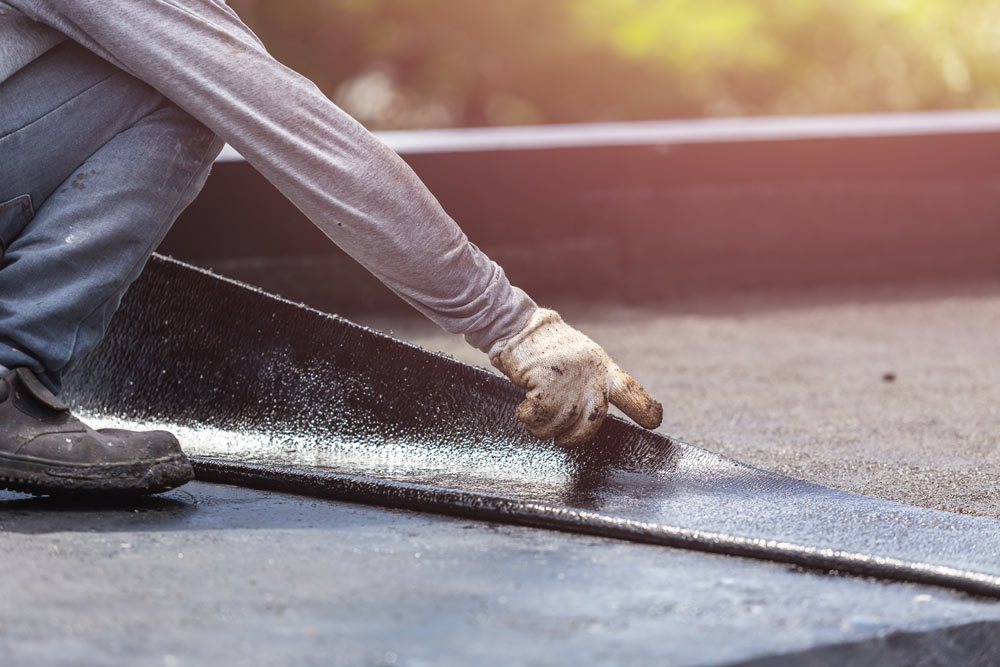The roof is one of the most critical components of any building, especially in commercial settings where a strong, reliable roofing system is essential for protecting assets, employees, and the overall integrity of the structure. However, the demands placed on commercial roofs—such as exposure to harsh weather conditions, foot traffic, and environmental wear—can lead to deterioration over time. Therefore, selecting the right waterproofing solution is key to extending the roof’s lifespan, reducing maintenance costs, and avoiding costly repairs.
Cold applied liquid waterproofing has emerged as one of the most versatile, durable, and efficient methods to maximise the lifespan of commercial roofs. This seamless, easy-to-apply solution not only offers outstanding protection against water ingress but also extends the life of existing roofs, making it a valuable investment for building owners and facility managers alike.
In this blog post, we will explore how cold applied liquid waterproofing helps maximise roof longevity and why it is becoming a popular choice for commercial roofing projects.
What is Cold Applied Liquid Waterproofing?
Cold applied liquid waterproofing is a method that involves applying a liquid membrane directly onto the roof surface without the need for heat or flames. The liquid forms a seamless, fully bonded membrane that adheres to the substrate and provides a waterproof barrier. Once applied, the liquid cures to create a durable, flexible membrane that can expand and contract with the building, ensuring long-lasting protection.
Unlike traditional waterproofing systems that may require heat application or involve overlapping seams, cold applied liquid waterproofing is a safer and more convenient option, suitable for a wide range of commercial roof types.
1. Seamless Application for Superior Waterproofing
One of the most significant advantages of cold applied liquid waterproofing is its seamless application. Water ingress is one of the primary reasons for roof failure, and even the smallest gap or seam can allow water to penetrate the roofing system, leading to leaks, mould growth, and structural damage.
With cold applied liquid waterproofing, the liquid membrane is applied continuously over the roof surface, eliminating the need for seams or joints where leaks could potentially form. The seamless nature of the application ensures that the entire roof is fully protected from water ingress, providing an effective barrier against even the harshest weather conditions.
This seamless application also allows the membrane to easily conform to complex roof shapes, penetrations, and awkward areas, ensuring comprehensive coverage and waterproofing for the entire surface.
2. Flexibility and Durability for Long-Term Protection
Commercial roofs are exposed to constant movement and temperature fluctuations. From expanding and contracting in response to weather changes to supporting foot traffic and equipment, these factors can cause traditional roofing materials to crack or deteriorate over time.
Cold applied liquid waterproofing is designed to be highly flexible, allowing it to move with the building and accommodate structural shifts without compromising its integrity. This flexibility ensures that the membrane remains intact, even under extreme temperature changes, helping to prevent cracks, splits, or leaks.
In addition to its flexibility, cold applied liquid waterproofing is highly durable, offering long-term protection for commercial roofs. Once cured, the membrane forms a tough, resilient layer that can withstand wear and tear, UV exposure, and other environmental stressors, significantly extending the life of the roof.
3. Cost-Effective Roof Refurbishment Solution
One of the key benefits of cold applied liquid waterproofing is its ability to be applied over existing roofing systems without the need for costly tear-offs or extensive repairs. This makes it an ideal solution for roof refurbishment projects where the existing roof structure is still sound but requires an additional layer of protection.
Rather than completely replacing an ageing roof, cold applied liquid waterproofing can be applied directly onto the existing surface, providing an effective waterproofing solution that extends the roof’s lifespan. This not only reduces material waste and labour costs but also minimises disruption to building operations, allowing businesses to continue functioning with minimal downtime.
By revitalising the roof without the need for a full replacement, cold applied liquid waterproofing offers a cost-effective solution that saves both time and money while ensuring long-term protection.
4. Versatility for Different Roof Types
Commercial buildings often feature a variety of roof types, from flat roofs to pitched roofs, as well as roofs with various penetrations, such as HVAC units, skylights, and vents. Cold applied liquid waterproofing is highly versatile and can be applied to almost any roof type, making it a suitable option for a wide range of commercial applications.
Whether you’re dealing with a flat, pitched, or irregularly shaped roof, cold applied liquid waterproofing can be tailored to meet the specific needs of the building. The liquid membrane easily conforms to any surface, ensuring comprehensive coverage even around complex details such as pipes, vents, and equipment mounts.
This versatility also extends to various substrate materials, including concrete, metal, asphalt, and bitumen, allowing cold applied liquid waterproofing to be used in both new construction and refurbishment projects.
5. Enhanced UV Resistance and Weather Protection
UV rays from the sun can cause traditional roofing materials to degrade over time, leading to cracks, fading, and overall deterioration. Cold applied liquid waterproofing offers enhanced UV resistance, protecting the roof from the damaging effects of prolonged sun exposure.
By shielding the roof from harmful UV rays, the membrane helps prevent premature ageing and degradation, ensuring that the roof remains in excellent condition for years to come. In addition to UV resistance, cold applied liquid waterproofing also provides outstanding protection against other weather conditions, such as rain, snow, and wind, ensuring year-round performance and reliability.
This superior weather resistance contributes to the long-term durability of the roofing system, allowing it to withstand even the harshest environmental conditions without compromising its waterproofing capabilities.
6. Safe and Eco-Friendly Application
Safety is a top priority for any roofing project, and one of the key advantages of cold applied liquid waterproofing is that it is applied without the need for open flames or heat. Traditional roofing systems, such as torch-on membranes, often require the use of blow torches or heat guns, which can pose a fire risk, especially in built-up areas or when working around sensitive equipment.
Cold applied liquid waterproofing eliminates this risk by using a cold application process, making it a safer option for both contractors and building occupants. This makes it particularly suitable for sensitive environments such as hospitals, schools, and data centres.
Additionally, many cold applied liquid waterproofing systems are solvent-free and low in volatile organic compounds (VOCs), making them an environmentally friendly choice. This reduces the environmental impact of the roofing project and contributes to healthier indoor air quality.
7. Minimal Disruption to Building Operations
For commercial properties, minimising disruption during roofing projects is essential to avoid interruptions to business operations. Cold applied liquid waterproofing offers a quick and efficient application process that reduces downtime and ensures the project is completed as smoothly as possible.
Because the system is cold-applied, there is no need for heavy machinery or heat application, which helps to keep noise and disruptions to a minimum. The fast-curing nature of the liquid membrane also means that the roof can be back in use relatively quickly, ensuring that normal business activities can resume with minimal delay.
Conclusion
Cold applied liquid waterproofing is an ideal solution for maximising the lifespan of commercial roofs. Its seamless application, flexibility, and durability ensure long-term protection against water ingress, temperature fluctuations, and environmental wear. The versatility of cold applied liquid waterproofing makes it suitable for a wide range of roof types and refurbishment projects, offering a cost-effective alternative to full roof replacements.
By choosing cold applied liquid waterproofing, businesses can enhance the longevity of their roofs, reduce maintenance costs, and minimise disruption during installation. Whether you’re looking to refurbish an existing roof or protect a new one, cold applied liquid waterproofing provides a robust, reliable solution that stands the test of time.



